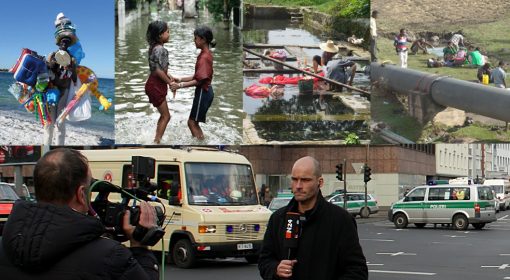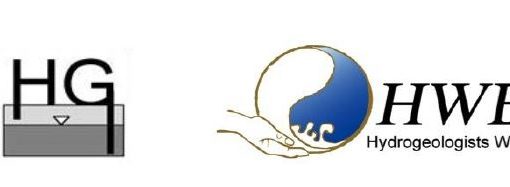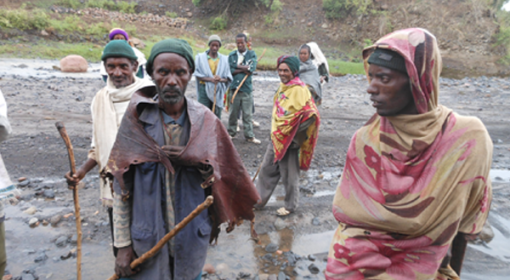
In April 1963, American newspaper publisher Phil Graham journalism as “… the first rough draft of history.” This description of what journalists do reflects a high degree of confidence in the news media. And indeed Mr. Graham belonged to a period when several noted journalists on TV, radio and in newspapers assumed iconic status.
Things are certainly different now in 2014. A recent Gallup poll show that confidence in mass media has slipped to an all-time low in the United States. Public discourse across countries suggests a similar trend worldwide. Mainstream Media (MSM) is now a term used as a pejorative, by the blogosphere, general public and even some mainstream media channels keen to distance themselves from their very own community.
There is much that is considered to be wrong with new media. Scientists/ experts often accuse journalists of being out of depth and ill-informed about the issues they cover. Popular culture and the general public often portray them as being insensitive to the subjects of their stories. Across the board, an oft-expressed idea is that they do not serve the public interest anymore; that their choice of stories and analysis is motivated by ratings, a shot at stardom, and agenda of their corporate bosses.
A set of public interest stories that fail to make it to the news is those about water and sanitation. Government agencies, NGOs, scientists and policymakers working on these issues bemoan how rarely they are discussed in the media despite being so important to public health and development outcomes, especially in developing countries. For example, it is well documented that over 780 million people lack access to clean water, that 3.4 million people die every year due to lack of drinking water or access to proper sanitation, and that the number of children dying for these reasons is equivalent to a jumbo jet crashing every 4 hours. This is almost 200 times more than the number of lives lost to terrorism last year, but also 200 times less likely to make headlines.
Of course, it would be unfair to lump all journalists together into one group. Many in the community recognize the importance of water and sanitation, and have been doing exemplary work bringing important stories to the fore. However, they do acknowledge that they are pretty much swimming against the tide. There is something to the very structure that the news media has acquired in recent times that makes stories on taps and toilets a touch choice to make.
The Business of News
“We are not in the newspaper business. If 90 percent of your revenues come from advertising, you are in the advertising business,” said Vineet Jain of India’s Times Group, that publishes The Times of India, the world’s largest English-language newspaper (and third largest across languages) with a readership of 7.6 million.
This rings true for news media across the world. What the audience pays as for subscription/sale is an increasingly small part of their total revenue (‘Printing the NYT costs twice as much annually as sending every subscriber a free Kindle’ ; ‘Less than free cover price keeps newspaper industry booming in India’).
Advertisements are how they meet costs and make profits, and so advertisers are where their loyalties are shifting. This is the case even with old news media with stature, history and legacies. For younger organizations, this is the model they are founded on.
The audience, therefore, are no longer the customers. They are the product that the news media offers to advertisers. This business model has bearing on the institutional values of news organizations. Water and sanitation stories are usually big picture issues that unfold over the long term. Covering them requires investment of time and money in research, follow up and training of journalists. With no clear link between such investments and advertising revenue, water and sanitation fall out of favour until they snowball into crises and disasters.
“Editors do not consider water issues as strong enough to have a desk assigned as water, to have a reporter or two permanently cover it,” says Seun Akioye from The Nation, Nigeria’s second most-read daily. “A lot of reporters actually wrote about hygiene, washing our hands, taking care of personal hygiene…. because of Ebola. Now that Nigeria has been declared Ebola-free, nobody is writing about it any longer.”
A common justification is that the media content only reflects what the audience demands. This might be a bit of a false argument, contends Umaru Sanda Amadu, a radio journalist from Accra-based Citi FM. “If you took your microphone and went into a community and said you’ve come to talk to them about water, their sanitation issues… people would clamour to the microphone and would want to speak to you. They would tell you to come look at their problems. If you have a story about it, they would want you to hear about it,” he argues. Umaru speaks from experience, having produced the award-winning radio documentary ‘Water Wahala’ which captures daily struggles thousands in Accra have to go through just to source the water they need to drink and wash.
“It is only available items that consumers can buy off the market. If there is only political news or celebrity news, they would go for it. If in the market there are no WaSH-related stories, how can they choose them?” he argues.
In Ghana, a particular kind of advertisements that crowds out public-interest stories is coverage of events involving politicians and celebrities that they pay news organizations to do. “When you do stories on water and sanitation issues in a community, its not going to pay you. This is one way many such stories remain unreported,” says Umaru.
Global, Local
There is often much difference between the coverage of water and sanction issues by national/ international media on the one hand, and regional news networks on the other. National/ international media cover big-picture issues or stories that have acquired a large scale. They tend to focus on macro perspectives of water and sanitation stories such as policy, governance and public expenditure. This furthers the impression of negligence towards local-level, human interest stories.
A case in point is sanitation in India. “Most of the coverage focuses on federal government campaigns to increase the coverage of toilets in rural India,” says Manu Moudgil of India Water Portal. “I don’t know if that’s the real solution. You have issues such as people not using toilets because of lack of water supply, or certain cultural issues or traditions. What about seepage from toilets that leads to groundwater pollution?”
On the other hand, Moudgil commends various regional news media in India for their sustained coverage of water and sanitation issues. Rajasthan Patrika, a Hindi-language daily based in northwestern Rajasthan state, goes so far as to run awareness campaigns on water harvesting and upkeep of local water bodies during the dry summer months. This is important considering that the almost 60% of the state is covered by the Thar Desert.
Highlighting the importance of local-level reportage, Ugandan journalist Fredrick Mugira goes on to say that the lack of local voices accounts for most of what is wrong with water and sanitation stories in African media. Because city-based journalists parachute in and out of rural areas, “…their stories are full of jargon, talk in the abstract, take a broad view and neglect paying attention to details, do not relate science to common experience, lack focus…. and lack humour,” he says.
Catalysing Change
With news media content being driven by structural factors such as finance and revenue, how can public interest stories such as water and sanitation be found a place in the newsroom? More importantly, who should do that and what would their incentive be?
One easily identifiable form of support is the research, follow up and training necessary for sustained coverage. “We in the WaSH sector can go some degree to bridge that gap,” says Chris Mason, former print journalist and Communications Officer at the Canada-based Centre for Affordable Water and Sanitation Technology. By ‘WaSH sector’ he refers to NGOs and companies involved in research, technology development, advocacy and community work related to Water, Sanitation and Hygiene.
“We can frame issues as part of a trend, provide context, support, statistics and experts available for interviews. So by the time a story reaches the editor, it is already complete and newsworthy now,” he says, adding that it is equally important to engage with media’s coverage of water and sanitation through comments and feedback. “If they take a step into the WaSH territory, and see that there is a lot of readership, support and dialogue happening, they would be much more likely to step back into it.”
Beyond Water and Sanitation
An increasingly advertising-driven news media has bearing on not just water and sanitation but public interest in general, extending to issues like governance, civil rights and public expenditure accountability. A special discussion on water supply and sanitation facilities is warranted as they form an aspect of public interest that is visual and measurable.
A 2013 audit found that more than half of EU-funded WaSH projects in Sub-Saharan Africa failed to meet their targets. This means money was wasted and people were deprived of much-needed improvement in their quality of life. The reasons are many and diverse. But it surely doesn’t help that the news media, the watchdog, has its eyes off this very important sector.



